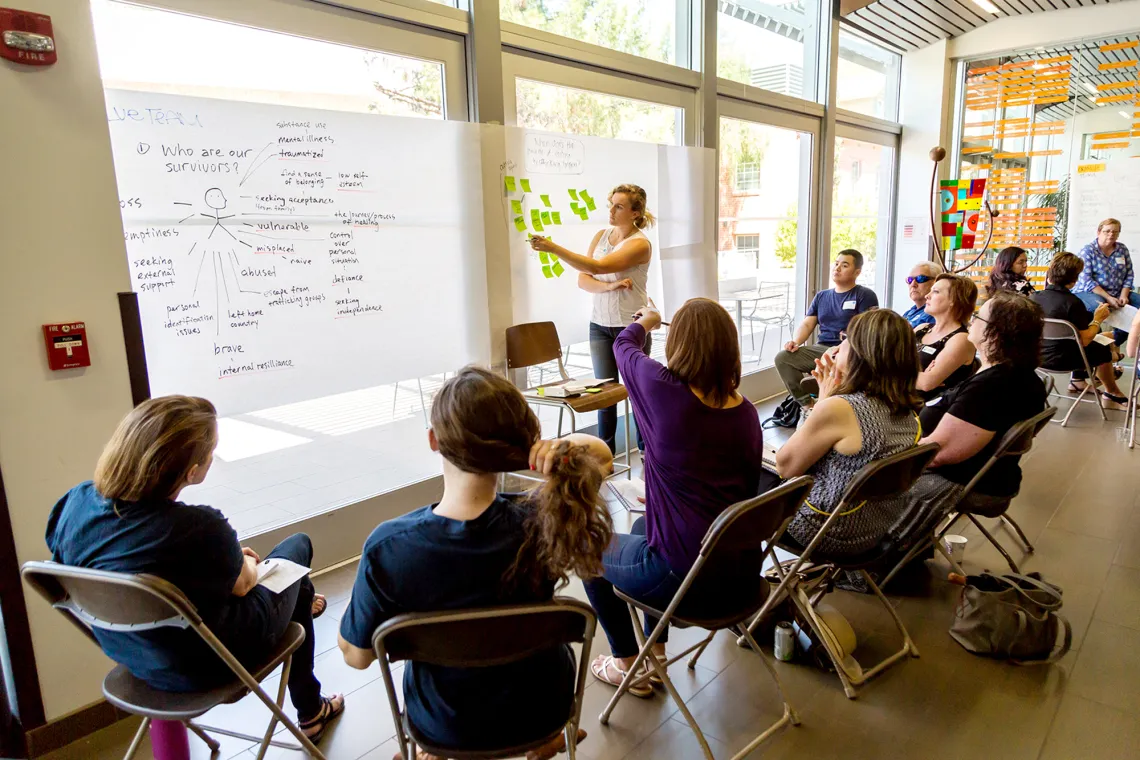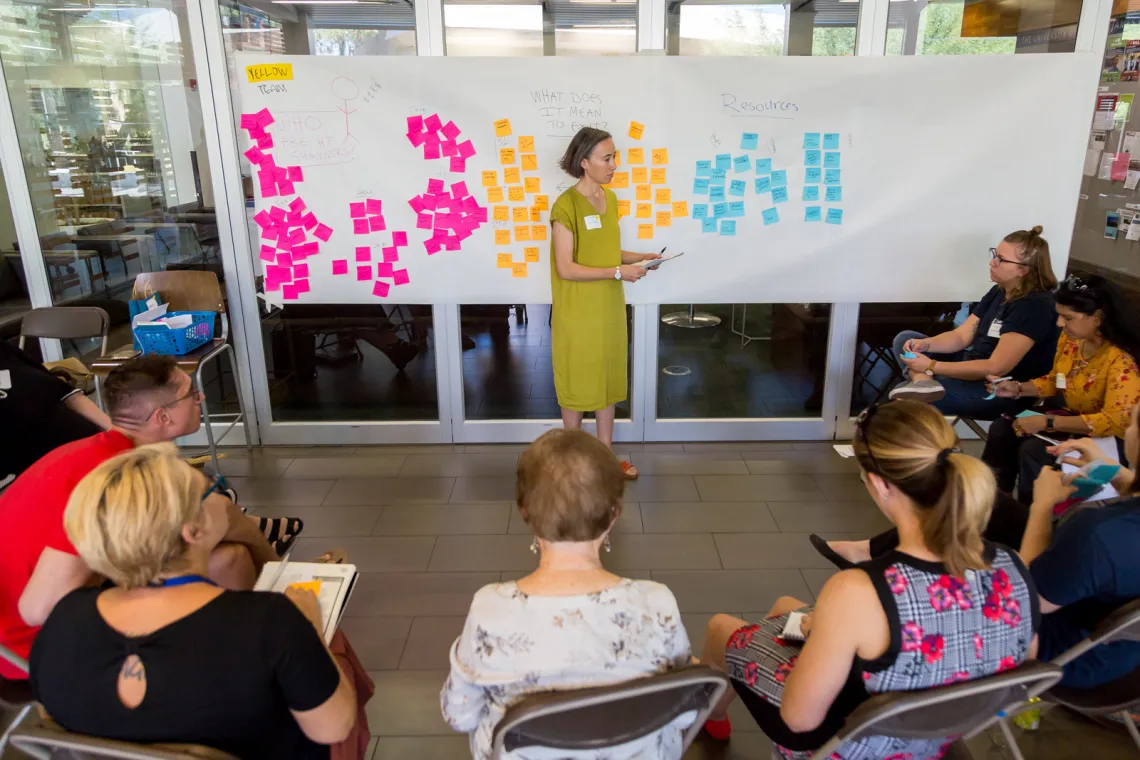Wonder Makes Us Innovate

Each year, millions of Americans face the civil court system with slim chances for true justice, either because they can’t afford a lawyer or due to technological hurdles blocking their path. The costs to them — and to society — can be significant.
That’s where Innovation for Justice, or i4J, comes in. Established in 2018 at the University of Arizona’s James E. Rogers College of Law, it’s the nation’s first cross-institution, cross-jurisdictional legal innovation lab. By examining civil justice issues through a design- and systems-thinking lens, i4J identifies barriers to access — such as a cumbersome self-service website or gaps in legal services meant to assist domestic violence victims.
In four years, i4J has drawn over 255 passionate students from disciplines ranging from law and business to public health.
Recently, i4J grew to include a partnership with the University of Utah’s David Eccles School of Business, where it helps develop pilot programs in that state, such as one that trains nonprofit legal advocates to serve people who cannot afford lawyers. It’s all about making reforms that close the justice gap and meet the civil legal needs of community members.
“There’s an enormous access-to-justice problem in this country,” says i4J director Stacy Butler. “There are just not enough resources being allocated. And the resources that are being allocated are pretty much focused on direct service — on putting out fires.”
Those “fires” include immediate, urgent civil legal needs of those who seek legal help, such as tenants who have received an eviction complaint and are five days away from a court hearing on the eviction. A traditional direct service approach to serving those with civil legal needs includes adding more legal aid attorneys across the country — necessary, but never enough. “There are not a lot of resources,” Butler says, “for trying to think systemically, through an innovation lens, about why we have these problems in the first place or what we’re going to do about them.”
The Cost of Eviction Calculator is one example of how i4J helps uncover systemic problems and inform policymakers. The free online tool estimates the downstream community costs of providing things like emergency shelter, emergency medical care and child welfare services to people evicted — costs that could total nearly $130 billion for the country as a whole.
In another project, i4J’s research into debt collection shows that while debt collection lawsuits are the most common type of civil litigation in the U.S., 98% of debt collection defendants do not have legal representation.
And a year-long pilot project demonstrated the effectiveness of using legal advocates instead of lawyers to assist victims of domestic violence. Thanks to a collaboration among i4J, the Arizona Supreme Court and the Emerge! Center Against Domestic Abuse, a new tier of legal professionals can now provide legal advice.

That addresses a huge need: some 97% of low-income domestic violence and sexual assault survivors experienced a civil legal problem. The legal advocate concept has since expanded to include people facing medical-debt issues and people experiencing housing instability.
These gaps in legal services are relatively obvious. Other gaps in the system are harder to unearth without systems- and design-thinking analysis. Sarah Mauet directs i4J’s UX4Justice Initiative. Her classes utilize UX (user experience research and design) methodologies as well as design- and systems-thinking approaches to evaluate and redesign justice sector technologies.
This approach has already yielded results in Utah, where it uncovered both high-tech and low-tech reasons why people were having trouble both accessing and using the state’s online self-help dispute resolution platform.
“We found that the vast majority of users struggled to make the transition from a paper document to the online tool because the URL was 50-plus characters long — and case sensitive,” says Mauet. “That was an absolute barrier. Many Americans can’t afford computers or internet service, so they rely on smartphones to access the internet.”
The remedy: Utah needed to update its URL to make it “short, human-readable and simple,” Mauet says. “And to add QR codes, so users could just snap a picture on their phone and visit the website automatically.”
That kind of problem-solving is what drew Gabriela Elizondo-Craig ’18 ’21 to i4J, where she’s now a post-graduate fellow after earning a bachelor’s in public health and a law degree. She says her public health studies opened her eyes to the effects policy can have on people’s lives. Now, she’s gratified by i4J’s emphasis on letting people explain what they need and then translating that need into policy reform.
“It’s how we produce solutions that are really meaningful for the community,” she says, “rather than imposing what we think would be the best thing.”
Jacob Wassenaar, a current student, would agree. Before attending the UArizona College of Law, he taught in an elementary school in an impoverished neighborhood, where he saw the lack-of-access problem firsthand.
“There’s a very significant justice gap,” Wassenaar says. “So many Americans are unable to receive basic legal assistance, and it’s a very significant problem for our entire legal system. Innovation for Justice keys in on how to close those gaps.”
